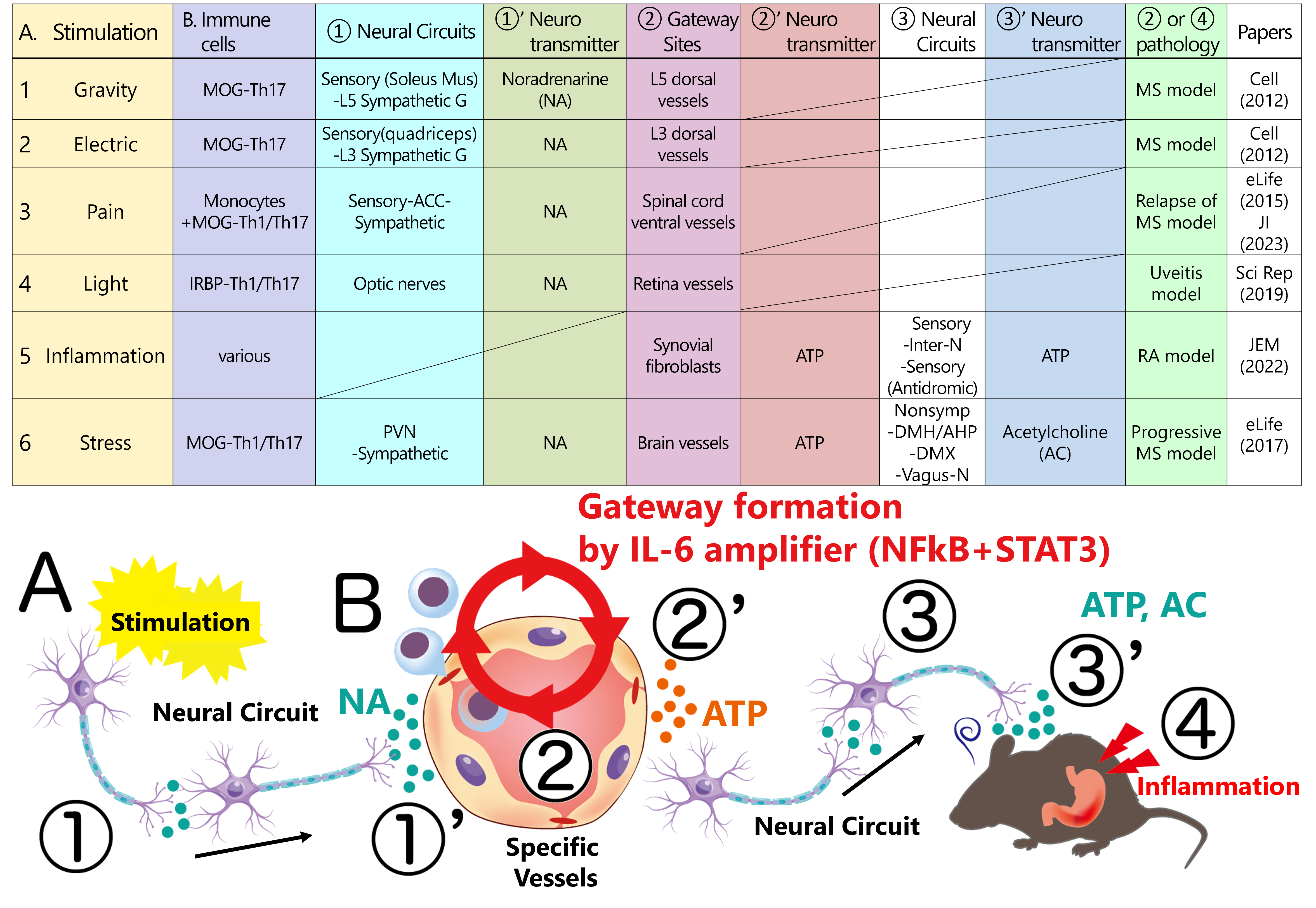Member
Discovery of new gateway reflexes
Detailed investigation of reported gateway reflexes
Genetic and environmental factors play significant roles in the development of autoimmune diseases. Family-based studies of autoimmune disorders have pinpointed several key genes that contribute to their onset. More recently, genome-wide association studies (GWAS) leveraging next-generation sequencing technologies have identified numerous single nucleotide polymorphisms (SNPs) present in patients with autoimmune diseases, further elucidating the genetic underpinnings of these conditions. In addition, environmental factors such as aging, infections, and stress have been shown to exacerbate the progression of these diseases. Our research has focused on the inflammatory cytokine IL-6 and CD4+ T cells. In 2008, we identified the “IL-6 amplifier”, a molecular mechanism that initiates inflammation. The IL-6 amplifier is a hyperactivation mechanism of the NFκB signaling pathway, induced by the simultaneous activation of both IL-6-STAT3 and NFκB pathways in non-immune cells such as endothelial, fibroblastic, and exocrine cells. We demonstrated that several SNPs are linked to disease development through the IL-6 amplifier by activation of the NFκB pathway. Furthermore, in 2012, we discovered a novel neuro-immune interaction termed the "Gateway Reflex." In this process, specific neural circuits, activated by environmental stimuli, trigger the release of noradrenaline at targeted blood vessels. This, in turn, forms ‘gateways’ that allow blood immune cells to infiltrate tissues through the IL-6 amplifier, facilitating the onset of tissue-specific autoimmune diseases. To date, we have identified six distinct Gateway Reflexes, in which various external stimuli—such as gravity, pain, stress, light, intra-articular inflammation, and artificial neuronal stimulation—induce gateway formation, contributing to the development of tissue-specific inflammatory diseases (see table below). Within the Division of Molecular Neuroimmunology, we have studied these two novel concepts of tissue-specific inflammation in collaboration with the Murakami laboratories at Hokkaido University and the National Institutes for Quantum Science and Technology. Moving forward, our investigation into the Gateway Reflexes will focus on
(1) identifying new Gateway Reflexes,
(2) conducting a detailed analysis of the associated neural circuits,
(3) examining the molecular mechanisms of gateway formation, and
(4) investigating the antigen specificity of autoreactive CD4+ T cells during gateway formation.
IL-6 Amplifier and Gateway Reflex

Selected publications
*H. Ogura et al., Interleukin-17 promotes autoimmunity by triggering a positive-feedback loop via interleukin-6 induction. Immunity 29, 628-636 (2008)
*Y. Arima et al., Regional neural activation defines a gateway for autoreactive T cells to cross the blood-brain barrier. Cell 148, 447-457 (2012).
*M. Murakami, D. Kamimura, T. Hirano, Pleiotropy and Specificity: Insights from the Interleukin 6 Family of Cytokines. Immunity 50, 812-831 (2019).
*R. Hasebe et al., ATP spreads inflammation to other limbs through crosstalk between sensory neurons and interneurons. The Journal of experimental medicine 219, (2022).
*T. Yamasaki et al., Zoobiquity experiments show the importance of the local MMP9-plasminogen axis in inflammatory bowel diseases in both dogs and patients. Int Immunol. 35, (2023)
